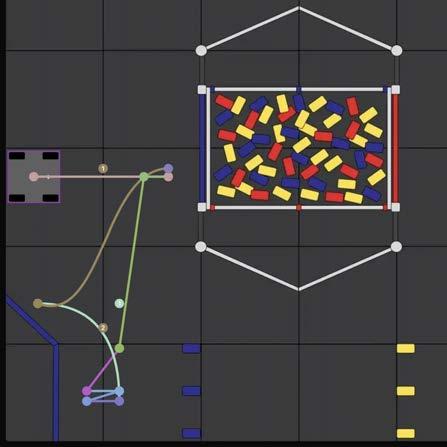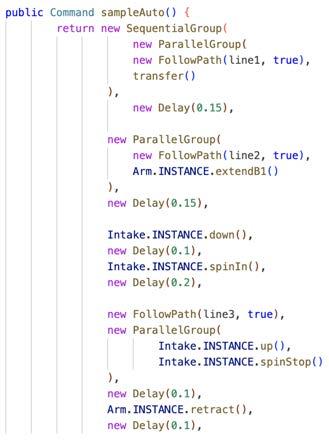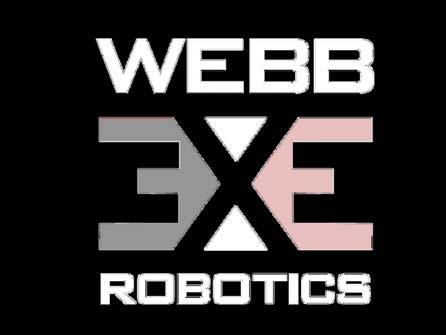

WEBB.EXE CHASING TEAM 359
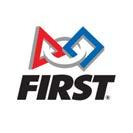
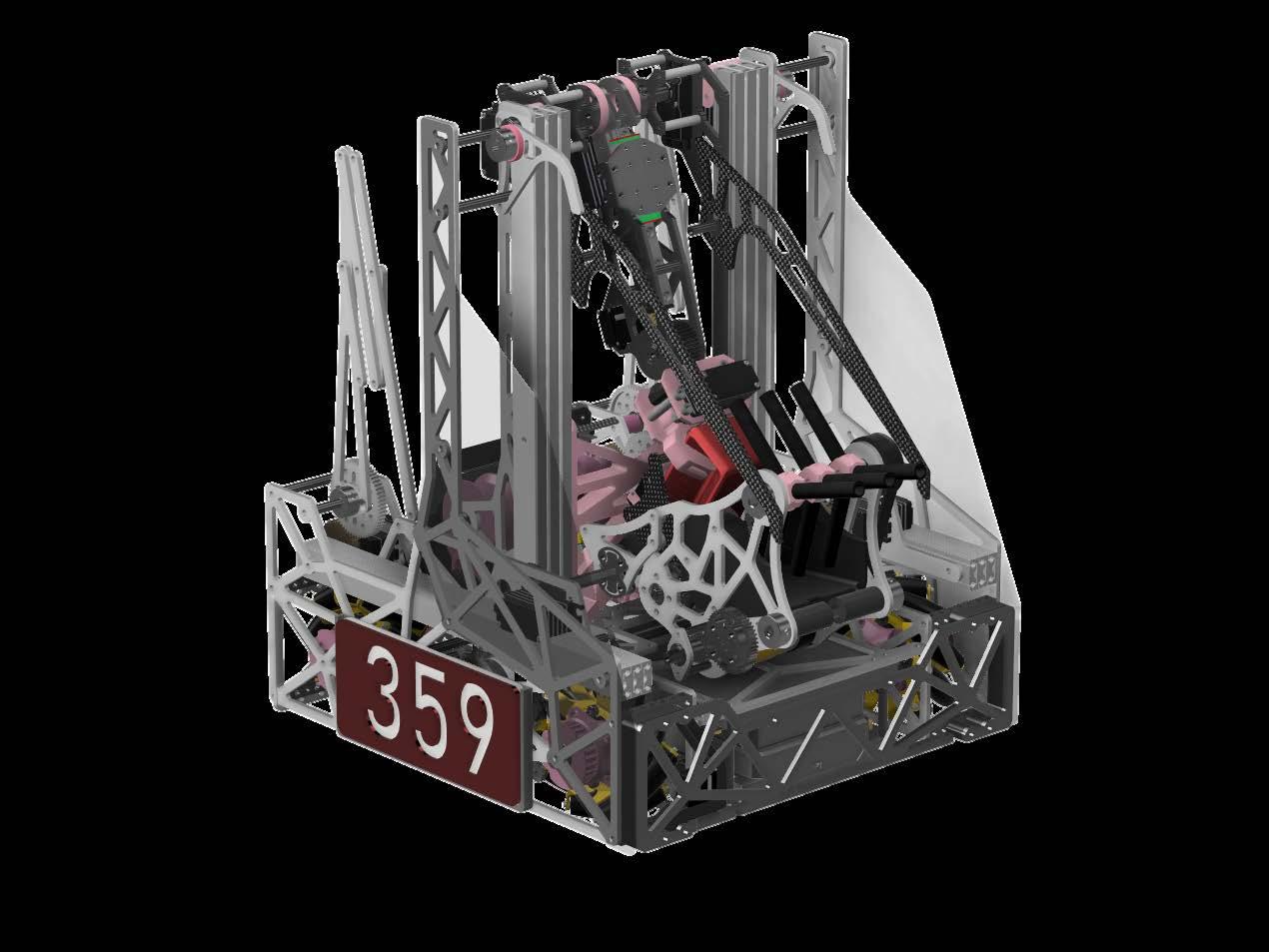
DYNAMIC ENGINEERING ENVIRONMENTS
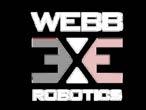
TEAM BIOS
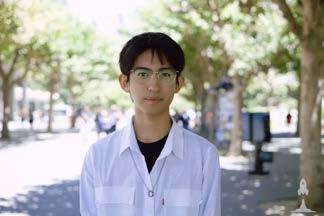

JERRY HU
Skills Developed: Team management, collaborative designing
Season Highlight: Designed novel and effective stringing method for reliable counter-stringing.

LINDA MENG
Skills Developed: Java Programming
Season Highlight: Created multithreaded tele-op structure.
JAKE HUI
Skills Developed: Advanced CAD Design
Season Highlight: Designed new active intake, reduced cycle time by 25%



Skills Developed: Pedro Pathing Library, Sensor integration
Season Highlight: Incorporated new localization and pathing algorithm for successful auto
TINA HOU
Skills Developed: Community engagement, public speaking

Skills Developed: Fabrication, structural analysis
Season Highlights: Designed reliable end game climbing mechanism for consistent level 3 climb. At Webb.exe, we value diversity and inclusivity. Our team is composed of members from 4 countries across 3 continents, and more importantly, of a diverse level of FIRST experience. Our team varies from 4th year FTC participants, VRC worlds finalists, to just 2nd year FTC participants. Our engineering processes, however, is not confined to a rigid hierarchy of sub-branches decided based on experience. We foster a collaborative development environment where everyone’s voices are equal and included in all steps of designing, programming, outreach and more.

Skills Developed: Robot mechanism assembly
Season Highlight: Assisted to reinforce chassis structure to withstand high impact collision.
Season Highlight: Connected with local non-profit and hosted programming courses for under-privileged communities

Skills Developed: Game analysis
Season Highlight: Designed optimal sample placement for bucket cycles
Skills Developed: Fundraising, event coordination
Season Highlight: Secured a major sponsorship that provided critical funding


OVERVIEW
ABOUT US
We are an 18-year FTC team, Team #359 “WEBB.EXE” from The Webb Schools in Claremont, California. Our mission is to develop, inspire, and educate by fostering a culture of innovation and a passion for learning within our community and beyond throughout our participation in FTC. We strive to empower students from diverse backgrounds, promoting a prospering environment where every member can thrive and contribute.
Intelligent Control
Multi-threaded teleop, which allows for:
Accurate input response
Precise joint position timings
Advanced intaketransfer - score state manipulation
Servo Powered Linkage for maximum extension
ROBOT OVERVIEW
3 DOF extending arm
Three 435RPM motors vertical lift power module
Custom belt-driven parallel plate chassis
Custom Parts
95% custom parts
3d printing, laser cutting, plasma cutting, and CNC

OUTREACH HIGHLIGHTS
Hosted all SoCal League E meets at our school
Mentored/Partnered with 40+ FTC teams, 2 FRC teams, 2 VRC teams, and 1 FLL team
Met and collaborated with Marine Biology Researcher, Mercedes Systems Engineer, and Harvey Mudd College Engineering and CS Professors, Professors and Senior Engineers at Shenzhen Polytechnic Institute of Future Technology along with their college robotics team, Director of AiRs Robotics Research Institute
Invited to attend the Rockwell automation fair as FIRST ambassadors
Functional and aesthetic design
Custom geometry claw
Actieve Intake with color sort and adjustable bucket orientations
5+0/0+6 Autonomous multithreaded autonomous pathing library Pedro Pathing Based Trajectory for 5+0 specimen auto and 0+6 Sample auto adapting to alliance strategies.
SEASON HIGHLIGHTS
ILT 4 Winning Alliance
ILT 4 Inspire Award 2nd Place
5 Specimen 50pts Autonomous
6 Sample 48pts Autonomous 200+ pts Solo Score College Acceptances

SEASONOVERVIEWPLANNING
TEAM MANAGEMENT
As a small, independent team consisting of 9 members, we lack the resources to implement a complex, multi-faceted team management system. However, our team has developed a unique organizational structure that thrives on our close-knit dynamic. Built on the strong relationships formed through FIRST and other experiences, we naturally collaborate to keep everyone engaged and informed about the season’s progress and individual responsibilities. This bond enables efficient communication, leverages each member’s strengths, and allows us to adapt quickly to challenges without relying on a rigid hierarchy. By cultivating an environment where everyone is valued and involved, we not only make robotics an enjoyable experience but also optimize learning, creativity, and teamwork—transforming each challenge into an opportunity for collective growth.
BUDGET DISTRIBUTION
SPONSORS
We would like to express our heartfelt gratitude to our school and our generous sponsors for their unwavering support of our robotics team. Their contributions have provided us with the resources, opportunities, and encouragement needed to innovate, collaborate, and grow as inspiring FIRST participants.




PLANNING, EXECUTION, IMPORTANT DATES




OUTREACH !
Our team prioritizes outreach as a key means of building connections and giving back to communities in the FIRST way. We’ve reached out to teams and professionals, hosted events of varying scales and purposes, and worked to reach a diverse range of audiences. Our goal is to share our passion for engineering while making a positive, lasting impact on science and engineering communities. 400+ IN-PERSON

MENTORS
This year, we’ve collaborated with several professionals to leverage their knowledge in support of our development. We are immensely grateful for their guidance over the season, which has been instrumental in helping us reach our achievements so far
Bailey Jorgensen Marine Biology researcher from UC Santa Barbara
Talked to us about marine biodiversity and its relationship to environment
Mentored our submarine project on underwater mapping and fossil excavation
Abhishek Mantha
Former Mercedes Benz autonomous driving developer
Taught us essentials of autonomous driving and its real world implications


Samsung Electronics
Yuexi Zhang PhD in CSEE, CV and Machine Learning researcher
We explained the FIRST competition in a meeting Provided critical software tips in approaching the game

Tesla Senior System
Validation Engineer
Frank Liang Tesla battery developer
Gave insights on mechanical structures and CV implementation logic

AI professor Ding Ning Chinese Professor of computer vision
Provided experience and suggestions on pathing library and CV pipelines
Team Development & Sustainability

Robotics professor
Duan Yi
Chinese Professor of robotics and engineering from BUAA
Conversed and exchanged ideas regarding design principles
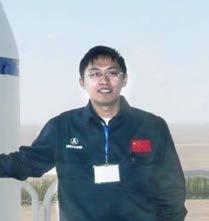
As the veteran team in our school’s robotics program, we place great value on team growth and development throughout the season. We take pride in managing recruitment and training for our school’s robotics program, dedicating significant efforts each year to bring new students into the FIRST community and guide them along the way. We also serve as the technical backbone of our school's introductory engineering and computer science courses. Through our commitment to mentorship, empowerment, and fostering a collaborative environment, we aim to inspire the next generation of innovators and problemsolvers within our school and the broader robotics community.
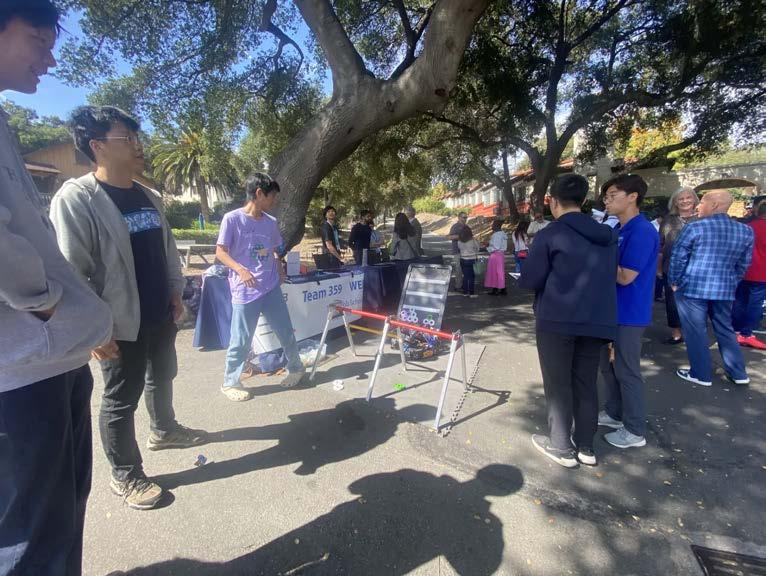

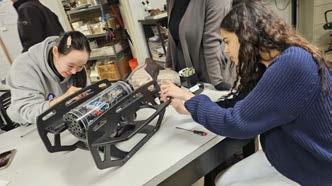
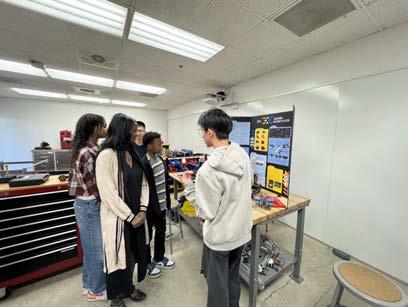
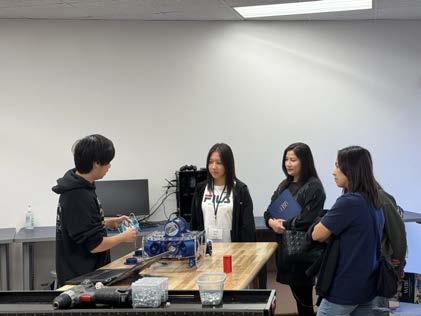
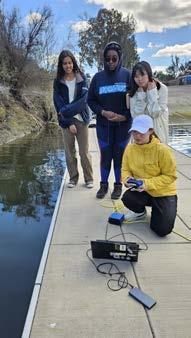
Prefer not to have picture shown

OUTREACH TIMELINE
3/22/2024 - Local Outreach 300+ influenced
Admitted Students Day
Hosted a station at event
Showcased our CenterStage robot to prospective families
March 2024 - Local Outreach 30+ influenced
Submarine Project
Built Submarine with Marine Biologist
Collaborated with the Webb School’s unbounded learning program
April 2024 - National Outreach 15 influenced
Team Meeting 15534 VERTEX
Shared designs of CenterStage robot
Gave Worlds advice
Sat up long term partnership
July 2024 - Regional Outreach 100+ Influenced
Intro to Python Boot Camp
Collaborated with local Non-profit
Dear Dream Foundation
Planned and taught 2 sessions of intro to Python summer Camp
Aimed to provide STEM education resources to local under-resourced communities

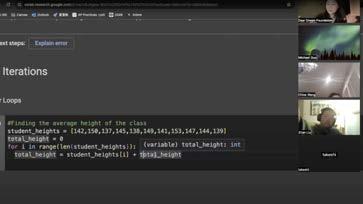
1/24/2025 - International Outreach, 10 Influenced
Team Meeting 19013 G-Force
Connected with Indian team G-Force
Gave advices on mechanical structures and designs
2/2/2025 - Local Outreach, 6 Influenced
Team Meeting 7767 Blueprints
Invited Blueprints to our lab
Practiced together and helped tune autonomous pathing
2/12/2025 - National Outreach 12 Influenced
Team Meeting 15534 VERTEX
Second meeting with VERTEX
Shared Outreach experience, CV, and autonomous pathing library
Discussed Future Outreach events
2/14/2025 - International Outreach 15+ Influenced
Team Meeting Chinese College

August 2024 - Local Outreach 30+ Influenced
Innovation Seminar
Helped design and open a new class for the Webb School
Members on team took the class as official technical support for classmates with less expereienced
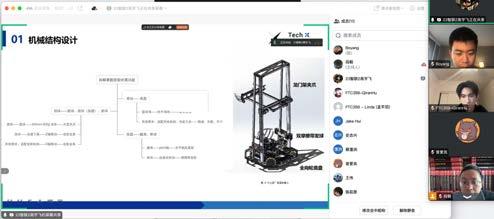
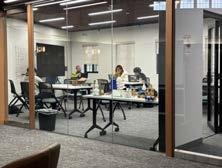
9/13/2024 - Local Outreach 500+ Influenced
Charles Huang Innovation Center
Helped started the first official makerspace in the Webb School
In charge of hardware selection and maintenance
11/3/2024 - Local Outreach 300+ Influenced
Discover Webb Day
Hosted the robotics station, math, and science station
Showcased past seasons robots and season progress to admitted families
11/23/2024 - Regional Outreach 500+ influenced
Rockwell Automation Fair
Invited to Rockwell Automation Fair as FIRST ambassadors
Presented to a group of professionals in an 8 hour exhibition

2/15/2025 - International Outreach 17 Influenced
Team Meeting 19600 Treeman
Talked about outreach resources
Discussed future outreach collaboration
2/15/2025 - International Outreach 17 Influenced
Team Meeting 13368 Mechatronics
Gave suggestions on robot designs
Established Long-terms partnership for international connections
2/20/2025 - Regional Outreach 8 Influenced
UCI Drone Club Visit
Visited UC Irvine Drone Club ran by FIRST alumn
Learned about college level engineering projects
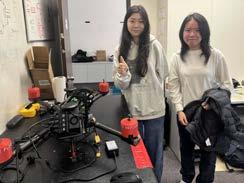
Team Meeting 4348 RoboKnights
Connected with 4348 RoboKnights online
Talked about robot design and game strategy
3/3/2025 - International Outreach 250+ Influenced
2/27/2025 - Regional Outreach 9 influenced Coast to Coast to Coast
International online seminar co-hosted with 19600 and 15534
Connected teams from west coast, east coast, and beyond the coast
Shared environmental protection insights

SEASON GOALS
CREATING AN IMPACT
Extend efforts to alumni
Giving back to FIRST community
Connecting with our league
Skills Development
Mentoring Teams
Fostering STEM interest
Rockwell Automation Fair
Charles Huang Innovation Center
September 13, 2024
Driven by a desire to improve the engineering environment at our school, members of our team played a key role in the development of the new Charles Huang Innovation Center. This is our school’s first dedicated maker space, equipped with high-quality 3d printers, a laser cutter, a robotic arm, and more. The space serves as the foundation for the school’s new project-based class, Innovation Seminar, and supports a variety of personal projects, helping to cultivate a strong STEM education.
November 23, 2024
Our team had the incredible opportunity to represent FIRST at the 2024 Rockwell Automation Fair. During this event, we introduced FIRST Tech Challenge (FTC) and this year’s game to a diverse audience of over 10,000 engineers and industry professionals in an 8 hour exhibition.
Submarine Project

Community Connections

March, 2024
In the fall of 2024, we initiated a collaboration with the Raymond M. Alf Museum of Paleontology on an underwater fossil excavations project in Turlock Lake. Through an extensive R&D process we developed a manually controlled submarine capable of underwater mapping and fossil detection. The project was then integrated into our school’s unique Unbounded Learning program. We brought a group of approximately 30 interested students on a week-long trip, where they designed, built, calibrated, and operated the drone submarine to collect and analyze measurements, fostering a deep appreciation for science and the environment.
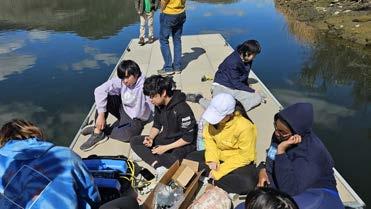
Our team is committed to expanding the robotics program within our community. To further develop our engineering and programming skills, we visited the nearby Claremont Colleges. We also connected with the Webb Admissions Department, engaging with 5 alumni and 20+ prospective students. During this time, we shared our past season’s engineering portfolio and game footage to promote FTC to those interested in joining the community. Additionally, we hosted robotics, math, and science stations during open house events, where we had the opportunity to speak with over 100 prospective families about the aforementioned programs.

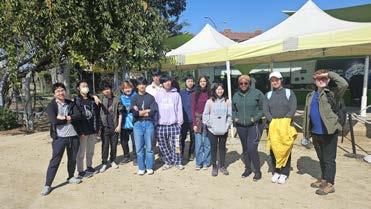

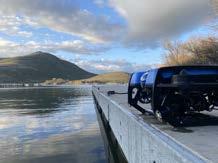
League Connections
We have a longstanding tradition of hosting the Southern California League E. This year, we hosted Meets 0, 1, 2, and 3 at the Webb Schools. In addition to handling setup, cleanup, parking management, refereeing, and serving as MCs, we also actively engaged with our local community. We participated in scrimmages and invited local teams to visit our lab, offering them the opportunity to practice and learn from our engineering processes.

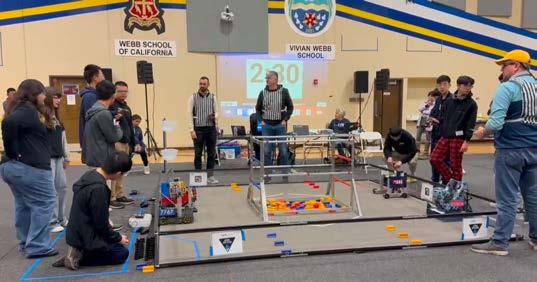

MAKING CONNECTIONS
MENTORING
As a team formed mainly of upperclassmen, we’ve all been through and value the development of rookie teams. In our school, we recruited members of all rookie teams and mentored them along the way. Impacting the community, we committed to mentoring and starting teams in FTC and VRC. Globally, we are active in social media and online FIRST communities and give technical support to teams in China, Canada, Bangladesh, and more.
FTC 358 GaulBots & FTC 19888 Alfa-Tech
School sibling team we’ve recruited and mentored along the season
Taught Cad, Prototyping practices and Programming
FTC 11347 CircuitRunners Robotics
Gave feedback to CAD
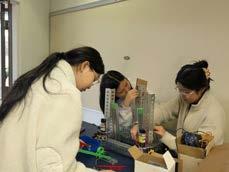
Provided examples and inspiration for intake system
FTC 24748 Team Atom
Taught CAD to team in Kazakhstan
Introduced team to Fusion 360
FTC 19013 G-Force
Exchanged approach in advanced CAD
Gave insights to sub-system modification
FTC 23929 Grizzly Tech
Donated parts

Mentored on autonomous pathing, helped tune road runner
Introduced team to Pedro Pathing
CONNECTING
FTC 13368 Mechatronics
Suggested professional engineering processes
Supported team in CAD and Programming
Shared Competition experiences
FLL 60444 Slipper Guys
Helped found the team
Mentored in person in Canada
Taught advanced programming
VRC 72711P Σ^3
Helped developed PID library for autonomous
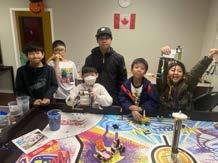
Tagged along their Signature event in UC Berkley
VRC 7700V Rolling Robotics
Helped with interview and designing
Aided in Autonmous driving Tuning
CONNECTED AND CONVERSED
FTC 15534 VERTEX
FTC 19600 Treeman
FTC 7767 Blueprints
FTC 26506 Axle-lotls
Aiming to form strong relationships and make presence in the FIRST community, we invited many teams to online and in person team meetings in order to exchange season experiences. Through these meetings we’ve built robust connections and co-hosted bigger outreach evens with these teams.


UPCOMING EVENTS
FTC 9614 Hyperion
FTC 4348 RoboKnights
FTC 11770 Curiosity

Our season does not end when competition ends. Despite our team all committed for States Championship preparation, we have already started to plan many upcoming outreach events for the off seasons.

FTC 21380 Beyond Robotics
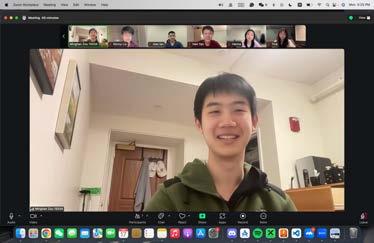
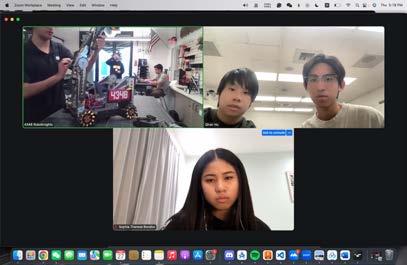
Official International Parts Sharing Platform for Environmental protection
Connecting with LA government to discuss environmental notions
Bike rides for marine garbage awareness
Hackathons in China and Bangladesh
Online Seminars for local Community with industry professionals
Engineering and Coding courses with local Non-Profit
Women in STEM events with Harvey Mudd College CS Professor
Collaboration with education sector in Bangladesh

DESIGN PROCESS
OUR DESIGN PROCESS
Having a planned design process is crucial for efficiently designing a high-performance robot. It allows us to systematically approach our design while considering all necessary factors and constraints. Under our unique team structure, each engineering decision is a collaborative result that considered the ideas of every member on the team.
1. Define the Problem
After developing a thorough understanding of the game, we define the task that the part or subsystem must accomplish.
2. Specify Requirements.
The objective of this step is to identify and define all constraints comprehensively. This ensures that potential issues during the implementation phase are minimized or avoided altogether.
Are there any size or weight limitations for this part/subsystem?
If applicable, how many motors or servos can it use?
3. Brainstorm ideas
Look back at previous seasons for potential inspirations on similar tasks such as intakes and lifts. Research real-world problems that are similar and their solutions. Conducting research on real-world problems and their solutions, such as car suspension systems or crane arms, can provide valuable insights for optimizing the robot's design and functionality in the current robotics competition.
4. Develop preliminary design and quickly fabricate
Nothing fancy is needed in CAD besides a part that can be quickly manufactured using processes like laser cutting and 3d printing or built from standard parts. The prototype’s purpose is not to be final but to enable us to test and determine its viability before committing further.
5. Test prototype
We test for:
Effectiveness: does it solve the problem it was designed to?
Weaknesses: what are the problems with the design?
Practicality & Feasibility: similar to effectiveness. Is the design overcomplicated? Hard to manufacture?
6. Analyze Results
After testing, we reevaluate the design (how well can we optimize it?). Is it worth pursuing, or should we try a different approach?
7. Repeat from step 4 until we are ready to move on
We continue the prototyping and testing cycle until we feel that we have a design that we are confident in. We should have already improved it significantly from the initial prototype and should have learned enough from testing and analysis to make a final implementation.
8. Final Implementation in CAD
BREAKING DOWN THE GAME
We watched the kickoff video and read Game Manual Part 2 to understand the game and scoring tasks. Using cost-benefit analysis, we prioritized tasks and planned subsystem development.
Key Functional Requirements (in order of R&D importance)
Robot is able to score both specimens and samples, extend into the submersible and be able to pick out the right color samples. Additionally is able to easily intake game elements from the human player station, both on the floor and grabbing from the wall.
Subsystems required to meet Key Functional Requirements Drivetrain, lift system, intake, extension mechanism
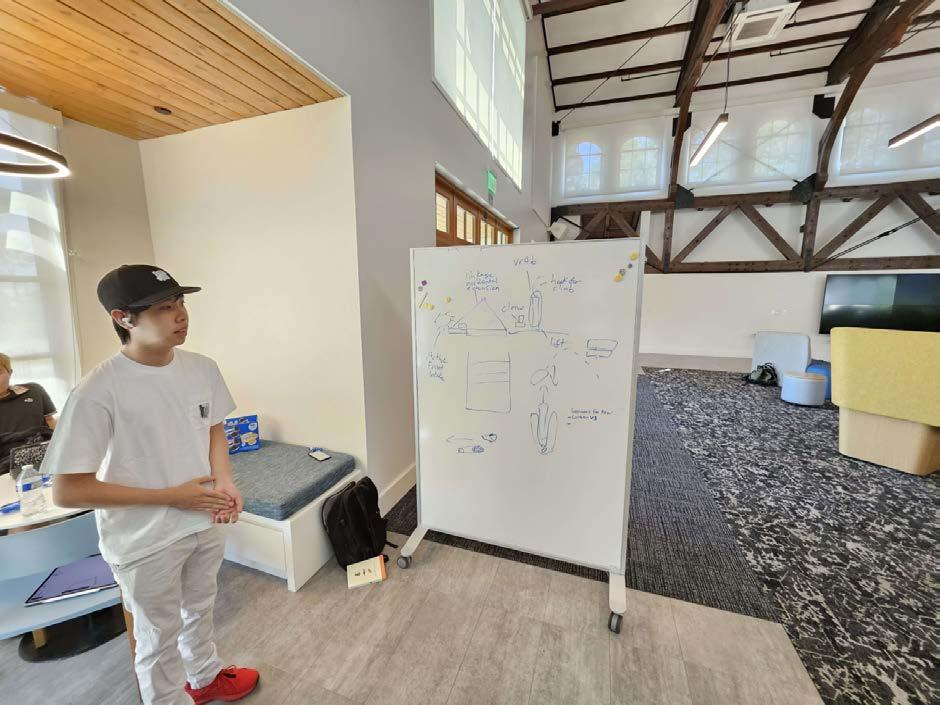
After improving the initial prototype and learning from testing and analysis, we can proceed with the final implementation. See the CAD organization page for how we keep track of our whole assembly.
BRAINSTORMING
After understanding the game and design needs, we brainstormed, drawing from past robots, choosing a horizontal extension crane design with a passthrough mechanism. We also explored intake options like a compliant wheel and traditional claws.
PROTOTYPING
After brainstorming, we created CAD models of potential designs for testing in our next work session. Our focus was prototyping intake mechanisms, as their performance would heavily impact other systems. Through testing, we selected a traditional claw design. While slower than an active intake, it proved more reliable, robust, and easier to integrate into our autonomous path, meeting our functional and design goals.
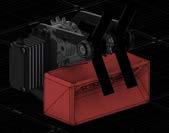
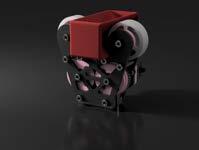

DRIVETRAIN
DRIVE TRAIN OVERVIEW
The chassis features a custom parallel plate construction with a belt-driven drivetrain for smooth and efficient motion
Equipped with 435 RPM motors and a 1:1 pulley ratio, the drivetrain achieves a maximum speed of 0.696 m/s
The belt-drive system ensures smooth power transmission while minimizing maintenance requirements
This chassis serves as the foundational structure for key robotic modules, including the intake, arm, horizontal extension, and lift
To mitigate backlash, adjustable belt tensioners have been incorporated into the design
A sample pusher is integrated at the chassis base to enhance responsiveness to suboptimal randomization conditions
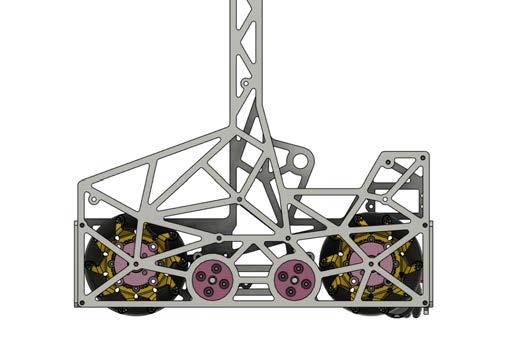
Side View
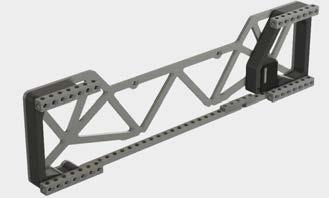



FUNCTIONAL REQUIREMENTS
Integration of all subsystem mountings into 4 parallel plates, reducing excess weight. Consistent and adjustable belt tensioning to prevent backlash.
Lightweight and aesthetically pleasing design for optimal performance and visual appeal.

ODOMETRY
Leveraging open-source innovation, our team has engineered cost-effective odometry pods “TinyOdo” (Figure Right), priced competitively at $65, which provide double the Clicks Per Rotation (CPR) compared to GoBilda's $100 alternatives. Adhering to design requirements, our pods boast a smaller turning radius, surpassing other models in agility and performance. Central to our navigation system is the implementation of 3-wheel odometry, offering enhanced accuracy and control (Figure Botton). This aligns seamlessly with our robot's overarching architecture.
Odometry Pods
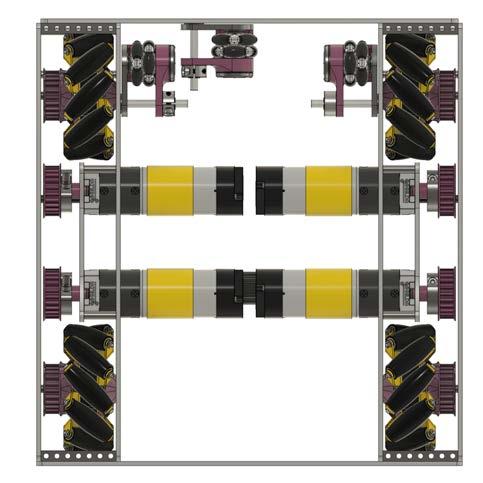

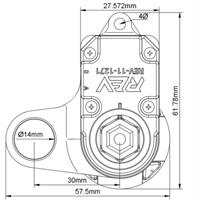
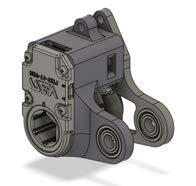
The previous belt driven system
V1 Chassis
V1 DESIGN October 15, 2024 Sample Pusher

INTAKE
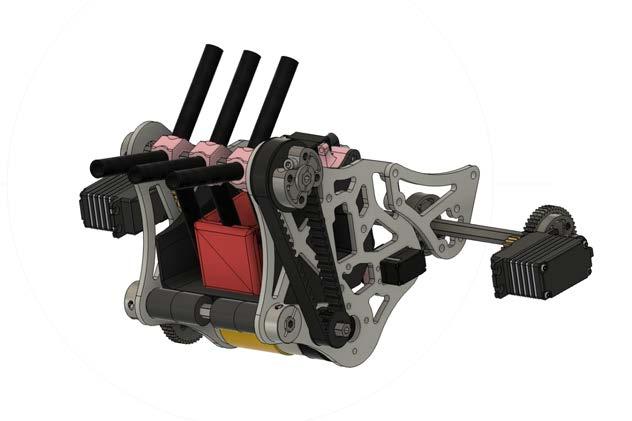
FUNCTIONAL REQUIREMENTS
Quick and efficient intake of specimens from the ground.
Capability to intake specimens from the wall.
Ability to intake specimens from any orientation for flexibility.
Lightweight and easily maintainable design for longterm reliability.
Durability to withstand heavy use and frequent operation.
Minimized time spent aligning, and enhancing operational efficiency.
Reduced potential for human error, ensuring smooth and reliable performance.
LEARNING PROCESS
INTAKE OVERVIEW
Compact drop-down active intake designed to intake all possible sample orientations from the submersible Color sensor is integrated for automatic sample color sorting Belt-driven power transmission powered by a bare 6k rpm motor, providing reliable power to the intake system.
Surgical Tubing runs on a 2k rpm bottom roller at 1k rpm, driven by a bare motor with a 2:1 ratio for efficient movement. Tailored components such as custom bucket and aluminum plates designed to optimize the intake and handling process.
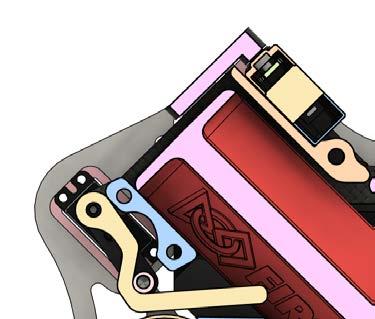
Our intake process has proven highly efficient for collecting game elements from the field. Earlier in the season, we experimented with a claw passthrough mechanism to mitigate inconsistencies; however, we encountered challenges with alignment precision and cycle speed optimization. Consequently, we reverted to a dropdown active intake with a locking alignment system that reliably transfers elements to our end effector, ensuring faster cycle times overall.
V2 DESIGN
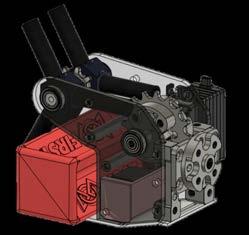
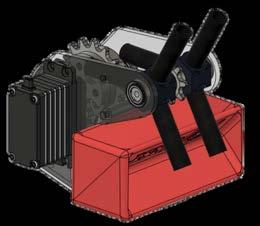
Geared-up servos and a bare 6000-rpm motor. Issues with integrating it into out passthrough system that have limited space.
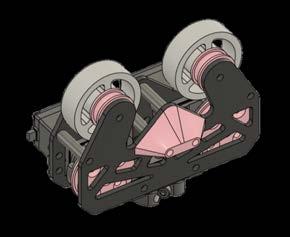
2
ALIGNMENT LOCK
Facing inconsistencies with our previous iterations of an active intakes, we pivoted towards designing a mechanism that can ensure a reliable transfer. Our design utilizes a single servo, controlling the motion of both the lock and the entire bucket with a passively sprung arm. By rotating the bucket we can ensure that the sample is in the same position every single time for conssistent transfers.
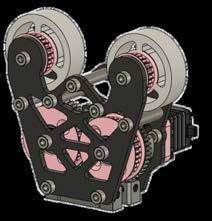
wheels
Two servos to single servo System is unreliable due to inconsistencies in servo power
V3 DESIGN



Alignment geometry from our initial prototyping.
Allowed a 30° intake margin of error and effective sample collection from clusters.
Active intake design involving surgical tubing. Fastest intake speed.
Simpler, lightweight claw to be the most reliable. Single-servo geared arm claw for both micro 9kg and standard 25kg servos

EXTENSIONS
EXTENSIONS OVERVIEW
Vertical Lift
Raises and lowers the robot, enabling the lift assembly to score high bar specimens and high bucket samples Powered by three 435rpm GoBuilda motors on a 44mm spool, achieving a maximum lift speed of 0.306 m/s
Horizontal Extension
Reduces drive distance during cycles, allowing the intake to reach more than two-thirds of the submersible zone. Utilizes three stages of Misumi Sar230 linear slides, powered by two Axon MAX servos connected to linkages. Provides precise control of the extension position, enhancing operational accuracy and flexibility.
Ascend

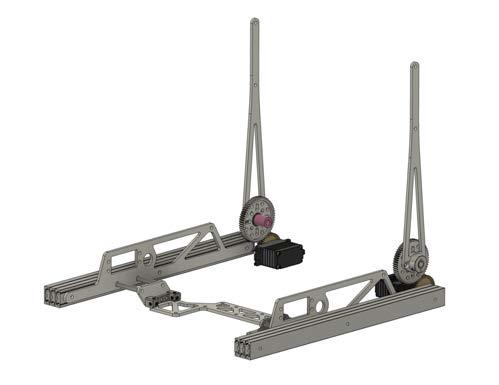
Our climb system shares the same power module as our lift, using three 435 rpm motors to support up to 35 pounds of weight. During the climb, the first set of active hooks pulls the robot upwards and locks onto a pair of sprung passive hooks. The weight distribution is intentionally designed to tilt the robot slightly backward, allowing the active hook to secure onto level 3, then repeat the motion to complete a successful level 3 climb.
FUNCTIONAL REQUIREMENTS
Horizontal Extension
Allows for precise control of extension position. Enables the extension to reach deep into the submersible.
Vertical Extension
Strong and stable to support the entire robot. Capable of reaching the top bucket. Operates at max possible speed to optimize cycle time. Integrates with level 3 ascend system for enhanced functionality
V1 DESIGN
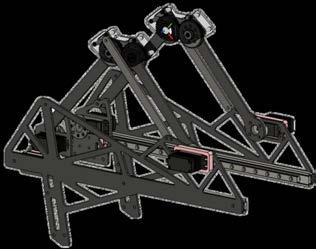
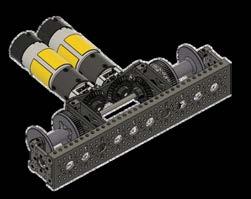
The initial design was a geared double reverse 4-bar linkage powered by 2 servos mounted near the front of the robot It allowed for maximum possible extension range from a servo powered linkage
The side plates serve as the attachment point for both the vertical slides and horizontal extension components
The limitations of this design were: the stability and reliability of the complex linkage system the excess strain put on the servos from the large mechanical disadvantage
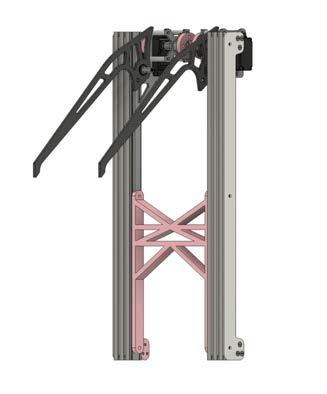

LEARNING PROCESS
While stringing the lift slides, we discovered that a counter string—one that actively pulls the lift downward— is critical for stable high‐speed operation. Accordingly, our lift power module incorporates three spools on a separate axis from the three motors. One spool, wrapped clockwise, exerts force to raise the lift, while the middle spool, wrapped counterclockwise under tension, provides the necessary pull downward. This configuration ensures proper tension, minimizes slack and maintains precise control at higher lift speeds.
V2 DESIGN
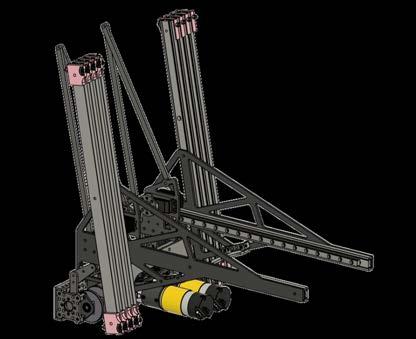
The extension servo mounts were moves to the lower back of the lift side plates, concentrating the center of gravity of the robot and allowing for a simpler linkage design
The horizontal extension was changed to a simple twostage linkage
This new approach greatly reduces servo strain and structural complexity, with only a slight reduction in maximum reach
eliminate risk of
for extra reliability due to lower risk of
Pass through system was consistent yet had limited cycle speed. Due to the weight of the subsytem, when extended had a tendency to tip
Vertical extensions still counterstrung to
lift jams The lift used thick 2mm diameter kevlar string rather than thin fishing line
jams.
Vertical Lift
Motor and spool to power lift
Horizontal Extension
Ascend System Hooks

END AFFECTOR
END AFFECTOR OVERVIEW
Asymmetrical parallel plates designed for a compact, rigid structure, minimizing the arm’s footprint while maintaining structural stability.
Custom claw geometry engineered for secure gripping, precisely tailored to accommodate samples of varying shapes and sizes. 3D-printed geared wrist joint provides precise control, delivering accurate angular positioning for smoother manipulation of specimens.
Integrated linear rail offers extended reach, enhancing the robot's ability to score specimens by providing additional extension.

LEARNING PROCESS
FUNCTIONAL REQUIREMENTS

Wrist joint for precise orientation when scoring samples. Integrates seamlessly from the center of the chassis to the intake assembly.
Sufficient length for flip-up scoring of specimens without requiring the vertical extension.
Reliable claw geometry for firm and secure transfer of specimens.
Transitioning from a pass‐through system to a transfer system, we were able to leverage our existing intake claw designs for the new end effector. The custom geometry proved both efficient and stable, allowing for reliable scoring of specimens and samples in precise orientations. Integrating 3D‐printed components with custom plates resulted in a simple yet robust design, ensuring a secure fit and smooth operation.
V1 DESIGN
The original design of the arm of the robot had 3 degrees of freedom, but the pivot and wrist joints were powered using a belted bevel gear differential driven by two servos mounted in the arm. This design was chosen initially because it would allow for 2 servos worth of power in each joint due to the differential, but during prototyping, the added complexity caused major backlash issues, which prevented accurate control.

V2 DESIGN

The intake arm used for ILT features three specialized joints (base, pivot, and wrist) offering 3 degrees of freedom, powered by 4 Axon Max servos. Key improvements from V1 include:
The base joint uses 2 Axon MAX servos mounted to the linear system with aluminum plates that also attach to the extension linkage.
This iteration maintains consistency with the robot's overall parallel plate construction method. Cable management has significantly improved over V1. All cables are now shielded and supported by hard plastic at servo connection points.
The pivot joint uses 1 Axon MAX servo with a GoBuildA 32mm ID Bearing for additional support on the servo horn, necessary for handling the forces when scoring specimens.
The wrist joint uses 1 Axon MAX servo with a 1:1 gear ratio, positioned inside the arm for a more compact design.
The two servos are mounted inside the arm, and are offset to both fit inside the tight space. The power is delivered to the differential by GT2 Timing belts on a 1:1 ratio.

TELEOP CODE
OPMODE OVERVIEW
Multithreaded code structure allows for separate asynchronous loops to handle automated sequences by using four separate control loops (drive, arm, extension, and input) running in parallel for smooth, simultaneous operation
State‐Based Logic which uses a state machine (e.g., “idle,” “ground,” “bucket,” “wall”) to ensure consistent, predictable movements across different robot modes when controlling complex subsystems
Uses non‐linear exponent scaling on joystick values, giving drivers precise control at low speeds and full power at higher stick deflections
FUNCTIONAL REQUIREMENTS

Stable control of the drivetrain to allow for fast movement across the field and precise control when intaking and scoring
Efficient State Transitions to allow drivers to move quickly between arm or intake positions with minimal button presses
Automated sequences such as the transfer sequence to be executed with a single button press
Safe Operation by ensuring servo positions and motor powers do not conflict
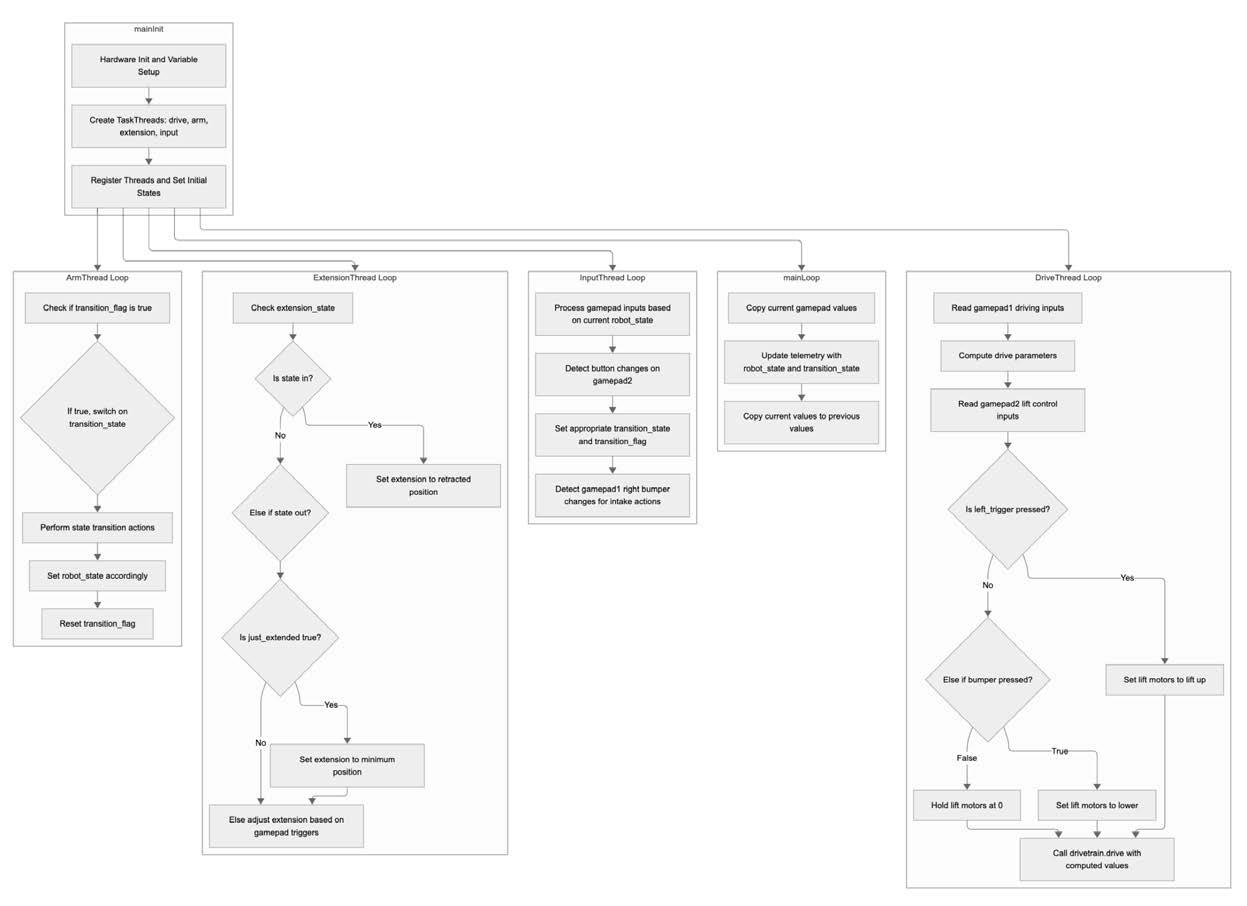
LEARNING PROCESS
We used a traditional single threaded, sequential structure for our league meets, but decided to switch over to multithreading for ILT. While multithreading made controlling many subsystems easier, the more complex code structure came with its own issues. We chose to handle all button inputs in a separate thread to properly detect double presses and prevent debounce, which resulted in issues with the different loops running out of sync. This issue was fixed by copying our current and past inputs and reading those instead of the actual button inputs on the controllers.


AUTONOMOUS CODE
Autonomous Overview
The autonomous code for our robot is designed to optimize path planning and execution using Pedro Pathing, a tool that leverages Bézier curves for smoother and more efficient movement. This allows for better error correction and ease of implementation compared to traditional splines. Additionally, we incorporated NextFTC, a commandbased system, to streamline complex sequences by replacing switch statements with path-driven automation.
Functional Requirements
Implement Pedro Pathing for autonomous navigation using Bézier curves.
Integrate NextFTC for command-based execution of sequential robot actions. Ensure efficient handling of intake and transfer system delays without requiring a finite-state machine. Improve pathing accuracy and speed while maintaining ease of use.
Follows paths with maximum motor power to complete 5 spec and 6 sample in time
While Road Runner has been the standard for autonomous pathing for the past few years, we decided to experiment with Pedro Pathing this season. Pedro Pathing uses Bezier curves which help increase speed while also making error correction smoother. We found Bezier curves, which are defined through control points rather than tangents, to be easier to work with than Road Runner’s splines. In addition, Pedro Pathing offers an excellent browser-based visualizer that makes path planning fast and easy.
5 Sample Auto Path

Command Based Autonomous Routine
Our intake and transfer systems require a lot of time-based delays between actions, which cannot be implemented efficiently in a finitestate machine. As a result, we use a command-based system, which organizes all autonomous actions such as servo movements and path following into commands. These commands are called sequentially and in parallel using wrappers, which allows for complex simultaneous movements with multiple PIDF controllers and servo sequences.
5 Specimen Auto Path
